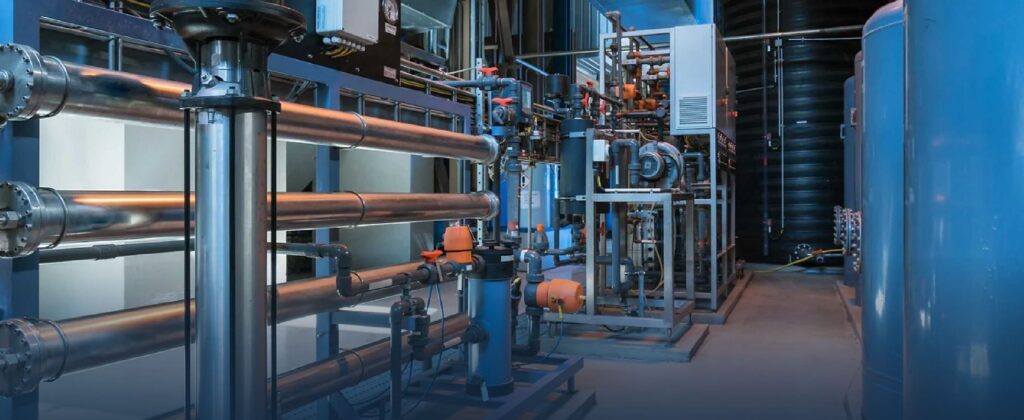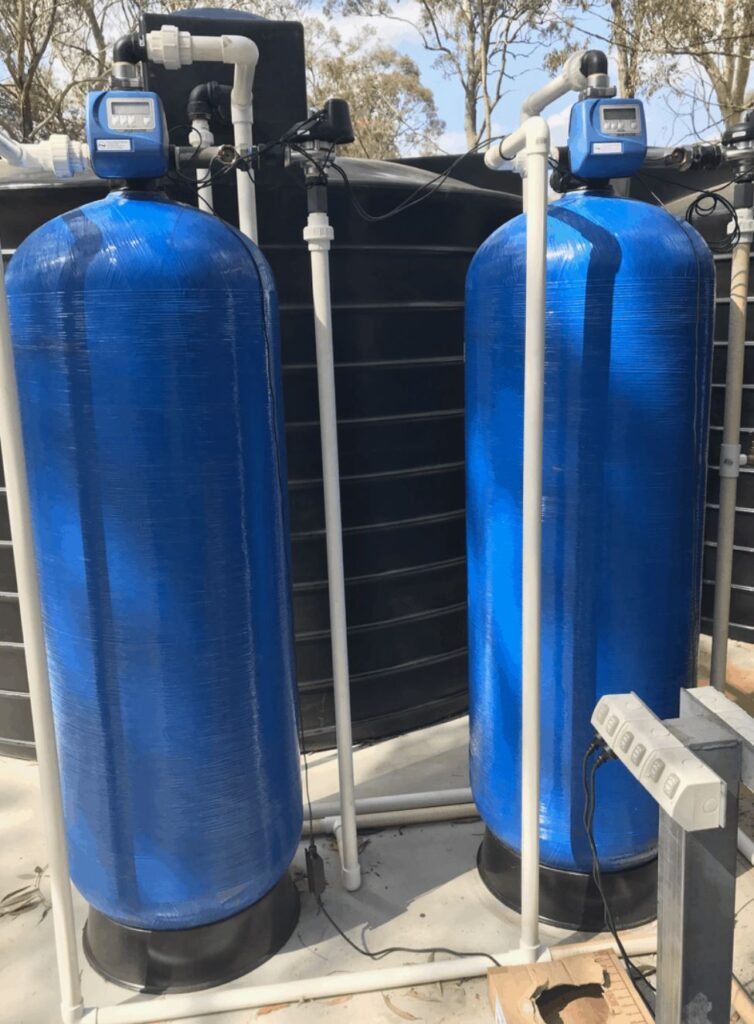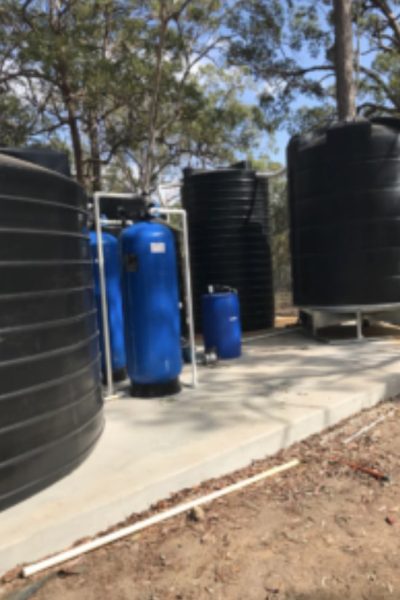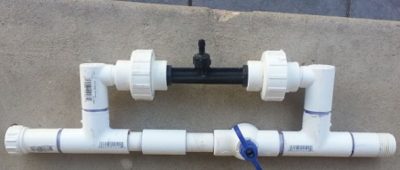~ CHANDLER ~
Chemical Free Iron Removal Filter
Pacific Water Technology recently commissioned an iron removal filter system using a natural catalytic manganese greensand filtration media. The bore water had a very low pH (less than 2) and iron levels exceeding 80 ppm. Iron staining was the main issue, as these high levels of iron are very extreme compared to other water sources.
In general, high levels of iron in your water supply scheme can have several noticeable effects on the appearance, smell and taste of your water. Iron can also affect your skin and plumbing fixtures and provide ideal breeding grounds for certain bacteria:
- Clouding and sediment: If your water supply contains iron, your water may have a cloudy appearance and contain sediment. The reason is that the oxidised iron will no longer dissolve completely in the water and precipitates out.
- Discolouration: If you have high iron levels in your water — usually 0.3 ppm or more or more — the water may be a rusty red or brown colour. Your water may still be safe to drink, but it will look less appealing.
- Staining: High concentrations of iron in home water will stain porcelain bathroom fixtures, laundry and dishes. Iron leaves unsightly reddish-brown marks that are difficult to remove.
- Metallic taste and smell: High iron concentrations often impart a metallic taste and smell to the water source.
- Altered appearance of food: Tea, coffee and vegetables prepared with iron-rich water may turn dark black and look unappetising. They may also have a harsh, metallic taste.
- Pipe build-up: Over time, iron sediment and residue can build up in the reticulation system and result in costly repairs.
- Bacterial overgrowth: Rarely, bacteria known as iron bacteria combine with iron to form rust and bacterial slime. They do not typically cause disease. However, research has shown that the presence of iron in water can promote the growth of bacteria like E. coli. Particularly if you have well water, you’ll want to test your water regularly to make sure it has not become contaminated with harmful bacteria.
Given these impacts, what are acceptable iron levels in well water? The ADWG (Australian Drinking Water Guidelines) has set a maximum contaminant level (MCL) of 0.3 parts per million for iron because of its aesthetic, non-health-related effects.
[Chemical Free Iron Removal Filters]
The challenge for this installation was the extreme levels of iron, requiring an initial Ph rectification by dosing with caustic. This was followed up by aeration using a Venturi air injector. The treated water was then transferred into a conical tank, that overflows into multiple tanks to lower the iron content to more manageable levels. The conical tank allowed easy drainage of accumulated sludge.






